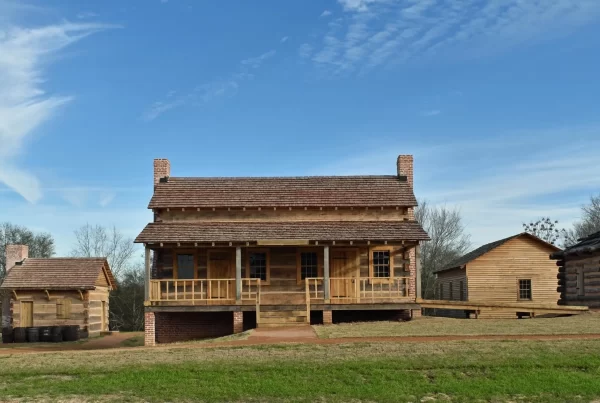In 1919, a landmark legislative inquiry—now known as the Canales Investigation—brought unprecedented scrutiny to the Texas Rangers, the storied law enforcement agency often mythologized as frontier heroes. Led by Representative José Tomás Canales of Brownsville, the investigation exposed serious abuses by Rangers stationed along the Texas–Mexico border and challenged the unchecked power the force had long wielded.
Although no criminal charges resulted, the inquiry triggered lasting reforms and reshaped public perception of the Rangers, especially among the Mexican American community.
Background: Border Violence and Public Outcry
The early 20th century saw a dramatic escalation of violence in South Texas. Against the backdrop of the Mexican Revolution, World War I, and growing fears of anarchism and revolution, state authorities dramatically expanded the number of Rangers, many of whom were hastily recruited and poorly trained. The state granted them extraordinary discretion to suppress supposed border unrest.
Between 1915 and 1919, Rangers participated in dozens of summary executions, arbitrary arrests, and forced removals. In some cases, entire communities of ethnic Mexicans were targeted in collective punishment operations. Estimates of the number killed during this period range from several hundred to more than a thousand. As reports of lynchings, beatings, and property destruction mounted, newspapers and Tejano organizations called on the state to rein in its lawmen.

José T. Canales and the Push for Oversight
As the only Hispanic legislator in the Texas House, José T. Canales, faced both political pressure from his constituents and personal risk in challenging the Rangers. He had received death threats and was warned that raising the issue would damage his political future. Nevertheless, he filed a formal resolution in January 1919 asking the Texas Legislature to investigate abuses committed by the Rangers and to evaluate the broader structure of the agency.
Canales compiled a lengthy bill of particulars, alleging misconduct ranging from routine harassment to outright murder. His goal was not only to expose individual wrongdoing but to highlight how the institution itself, absent oversight, had become dangerous to the public it was meant to protect.
Hearings and Testimony
The hearings, held in Austin, stretched over several weeks. Witnesses included South Texas ranchers, Mexican American laborers, civic leaders, clergy, and law enforcement officers. Some gave harrowing testimony about family members who disappeared after encounters with Rangers, while others described intimidation and extortion.
Canales was subjected to aggressive questioning and cross-examination but held firm. His meticulous documentation and calm demeanor won him praise even from political opponents. In total, he presented 19 charges against the Rangers, supported by affidavits and eyewitnesses.
Findings of the Committee
The legislative committee, composed of five lawmakers, issued a report that walked a careful line. It acknowledged that some Rangers had committed serious abuses and that reforms were necessary. However, the report also praised the Ranger force for its service and valor, and it stopped short of recommending criminal prosecution or wholesale dismissal.
Many observers viewed the findings as politically expedient—a compromise between calls for justice and the Legislature’s reluctance to alienate powerful rural constituencies. Still, the investigation had lasting consequences.
Key Reforms Enacted
As a direct result of the Canales Investigation, the Texas Legislature adopted a series of changes designed to curb Ranger misconduct:
- Reduced Numbers: The force was significantly downsized, with the state eliminating dozens of temporary commissions and narrowing hiring criteria.
- Structural Reorganization: Rangers were placed under tighter central control, foreshadowing their eventual absorption into the Department of Public Safety in 1935.
- Recordkeeping and Reporting: Rangers were required to maintain detailed records of their activities, including arrests and use of force.
- Improved Recruitment: A more professionalized recruitment process was introduced, including background checks and formal training.
While enforcement of these measures was uneven in the decades that followed, they marked a turning point in the transformation of the Rangers from a loosely organized paramilitary force into a modern law enforcement agency.
Legacy and Historical Interpretation
The Canales Investigation is now recognized as a foundational moment in the development of civilian oversight of law enforcement in Texas. For Mexican Americans, it was a rare instance when the state acknowledged systemic abuse, even if it fell short of true accountability. Canales himself continued to advocate for civil rights and legal reform until his retirement from public life.
Today, historians view the investigation as both a triumph of legislative courage and a sobering reminder of the limits of reform. It exposed deep fissures in Texas society—between Anglo and Mexican communities, between frontier myth and reality—and laid the groundwork for later civil rights struggles in the state.
Though the Texas Rangers remain a celebrated symbol in state lore, the abuses of the 1910s—and earlier episodes of racial violence—cast a long shadow. The Canales Investigation not only altered the course of the Rangers’ evolution but also provided a precedent for demanding justice from institutions that had long operated without restraint.




